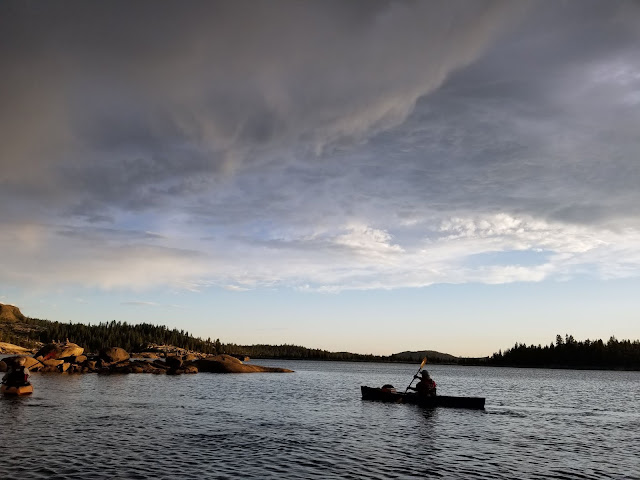The time to relax is when you don't have time for it. -- Sydney Harris
Breathe. Breathe. Breathe. I tell myself over and over again as I start my paddle across the lake. Open up and relax your body. Settle into the seat of the kayak. I have to keep reminding myself as I paddle out of the lagoon at Lake Natoma's Nimbus Flats. At the same, I keep the pressure on the footpegs and the knee braces with each stroke of my paddle. One foot relaxes while the other pushes, and the alternate like climbing up some stairs. And breathe again.
Many paddlers start out tense and stiff as they recognize their instability on the water just a few inches away. As a fellow paddler, Daniel Fox wrote, "Kayaking is my intimate relationship with water. I feel vulnerable and at the water's mercy. Sitting in a boat, only millimeters of carbon and fiberglass keeping me dry and protected, I am connected to the forces at play."
It has been a few weeks since I have even been in my kayak, and I feel a bit nervous getting out on the water again. Maybe even a bit rusty. My Prijon Barracuda, just shy of 17-feet, is a sleek and fast boat. But it always feels a bit tippy on entry. It can have a bit of an ornery nature. So there is a learning curve to adjust to it. Breath and relax, I say to myself again. Trust the boat. Feel its secondary stability. Now settle into the seat. Loosen up those hands. Believe in yourself.
Halfway across the lake, I'm in the zone. The right frame of mind. Another deep breath and another big sweep of the paddle. The feeling of worry and anxiety is lifted away like the morning fog on the lake.
It has been raining here. Not as much as we need, but enough that the lake is sitting very high, indeed. It will be easy to get back into the sloughs and the tiny little bays of the lake. Some think damp and cold don't make for great kayaking conditions, but with the right gear such as dry pants, spray skirts, and splash jackets, the weather is only a state of mind.
I turn my kayak into the still water of the lake's backwaters. It's a network of flooded channels and canals of the riparian landscape. Often explored when the lake is high. A safe haven of sorts. It's out of the wind and out of sight to many. In the wintertime, the water is just so crystal clear. Unlike most summer days, I can easily see into the depths of water. I can make out the rocks, tree branches, and even a passing swimming turtle as if they were my own giant aquarium. The translucency of the waters is so much better in the winter than in the summer heat when it's filled with algae, green weeds, and murky water.
There is no wind and little other sounds except the waterfowl. Rounding another watery corner, I spot a couple of Mergansers diving into shallows. Nearby a majestic Snowy Egret is almost glowing against the green foliage of the slough. In the distance, a few wood ducks do their best to skirt away from my oncoming kayak, while the year-round residents of Canadian Geese pay me little attention except for some loud honking when I get a bit too close.
I drink in the morning on the lake and breath in the silent peacefulness of the slough. I remember chief officer Scotty from the 1960 TV series Star Trek. He was always able to get the Star Ship Enterprise going when something went wrong. All he needed was more time to get things done. This morning on the tranquil water, unlike Scotty, I need more time to do nothing except sit in the solace of my kayak watching wetland birds and creatures.
With a busy life and a lack of daytime hours to enjoy the water, my paddling can seem like a two-minute drill before running off to my wintertime jobs. I catch myself thinking about work schedules and looming deadlines. I check the clock on my phone.
Author A.A. Milne wrote, "Don’t underestimate the value of doing nothing, of just going along, listening to all the things you can’t hear, and not bothering.”
Breathe. Breathe. Breathe. I tell myself again. I have time. I veer my kayak around again for another tour through the refuge of the slough.
















